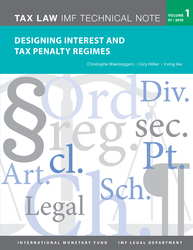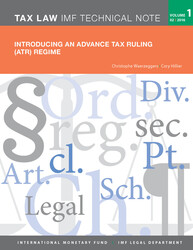
Introducing a General Anti-Avoidance Rule (GAAR): Ensuring That a GAAR Achieves Its Purpose
The ultimate purpose of a GAAR is to stamp out unacceptable tax avoidance practices.
READ MORE...
Volume/Issue:
Volume 2016
Issue 001
Publication date:
ISBN:
Add to Cart by clicking price of the language and format you'd like to purchase
Available Languages and Formats
Topics covered in this book
This title contains information about the following subjects.
Click on a subject if you would like to see other titles with the same subjects.
Exports and Imports , Taxation - General , TLT , general anti-avoidance rule , tax benefit , sample GAAR , economic gain , taxpayer , GAAR determination , purpose test , company B , export exemption , tax authority , Anti-avoidance rules , Tax avoidance , Double taxation , Exports , Tax law , Global , introduce a General Anti-Avoidance Rule
Summary
Tax avoidance continues to attract attention globally with strong support for tax law reform at all levels. This Tax Law IMF Technical Note focuses on some of the key design and drafting considerations of one specific legal instrument (being, a statutory general anti-avoidance rule (GAAR)) which is often considered by authorities to combat unacceptable tax avoidance practices. A GAAR is typically designed to strike down those otherwise lawful practices that are found to be carried out in a manner which undermines the intention of the tax law such as where a taxpayer has misused or abused that law. However, the objective of combating unacceptable tax avoidance can itself make the legal design of a GAAR complex. This is simply because the phrase “tax avoidance” means different things to different people. Whatever the form of a GAAR, it should give effect to a policy that seeks to strike down blatant, artificial or contrived arrangements which are tax driven. However, the GAAR should be designed and applied so as not to inhibit or impede ordinary commercial transactions. This Tax Law IMF Technical Note discusses and explores how drawing a line between those arrangements which should be caught by the GAAR is a matter of degree and can be delicate.
Copyright © 2010 - 2025
Powered by:
AIDC


